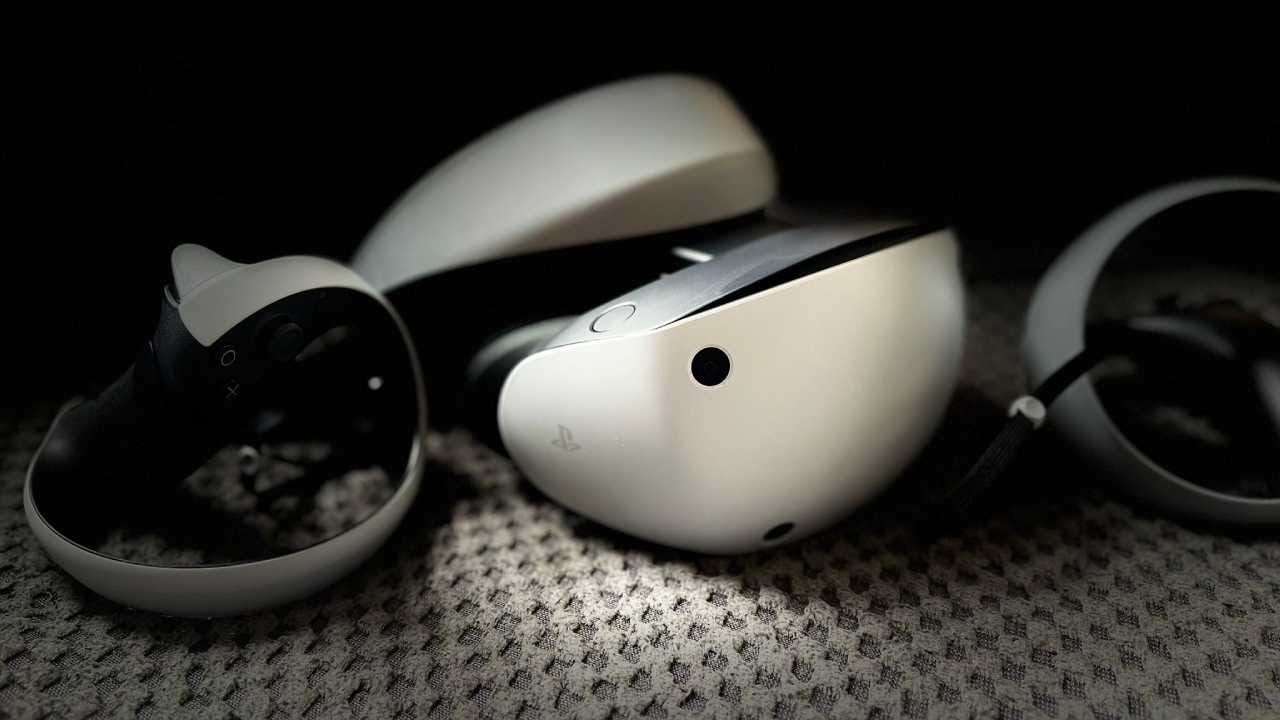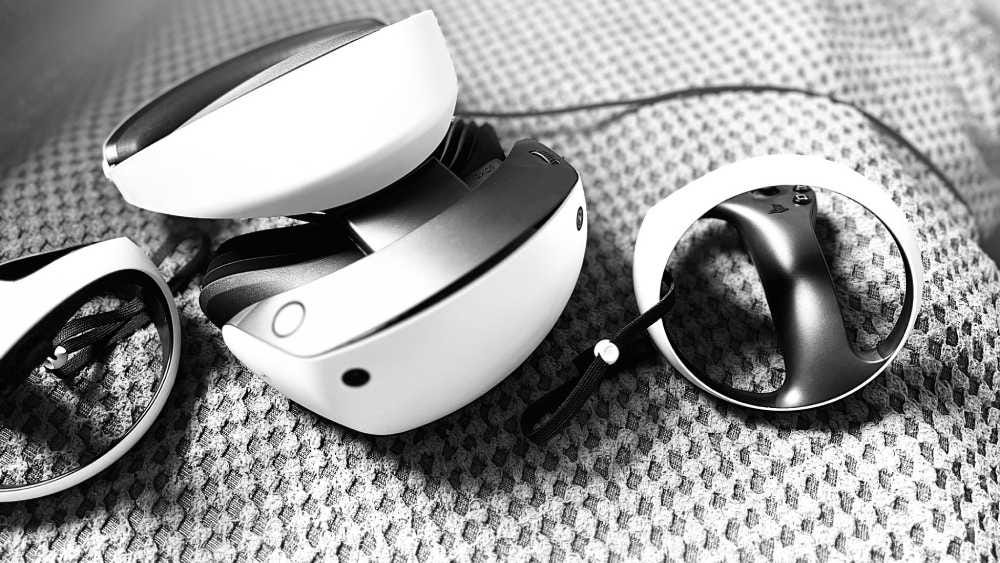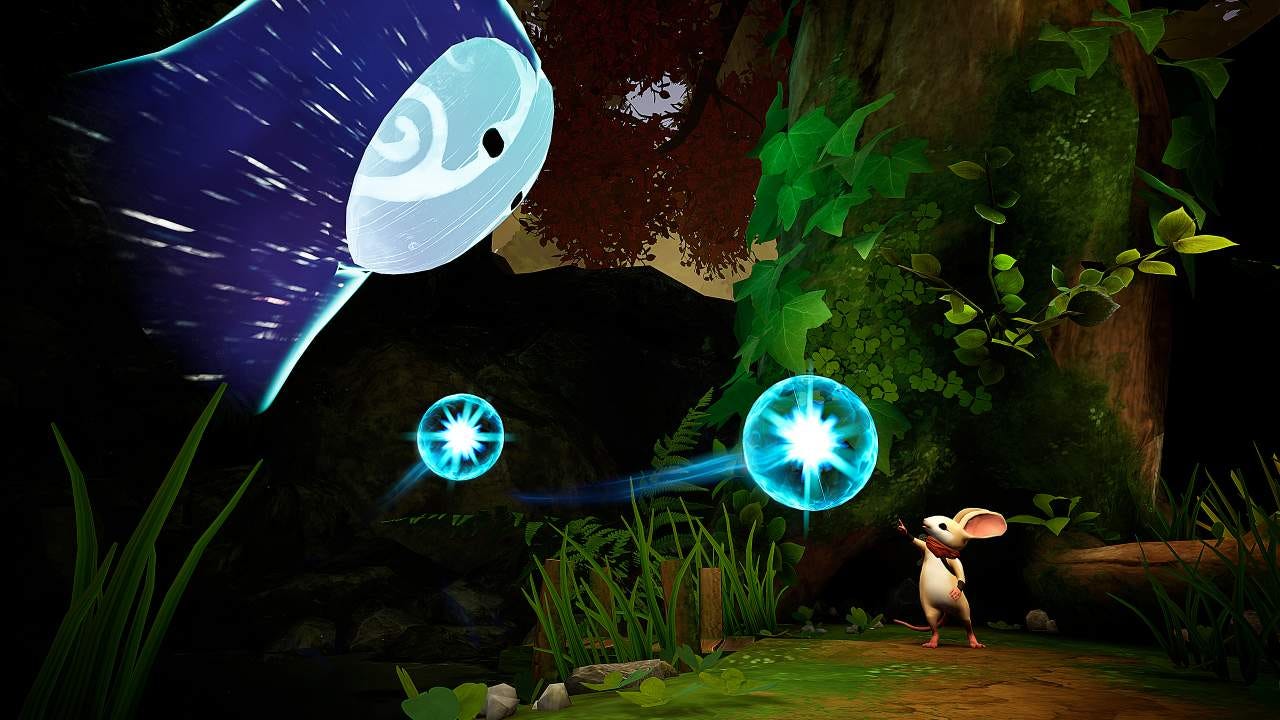Is PSVR 2 worth it? Here's what we think of Sony's PS5 headset a year on
Sony's new virtual reality headset has huge potential, but is it enough to convince newcomers that VR is really worth it?
Update: The PSVR 2 reached its first anniversary on February 22, 2024, and many of the flaws that were evident at launch remain while some have grown more concerning.
Sony has stubbornly kept the headset’s price tag at $549, with no discounts or offers to speak of. There’s also been no effort to introduce free games via PlayStation Plus to make the PSVR 2’s price a little less daunting, and the lack of first-party support was worrying at first but now feels rather damning.
Aside from Horizon Call of the Mountain, an update to Gran Turismo 7, and Firewall Ultra, Sony simply isn’t creating any games in-house for its PS5 headset. Nothing has been announced in the future, either, which means gamers are at the mercy of third parties and ports from other platforms.
That would be easier to accept if PSVR 2 sales were healthy. But reports indicate Sony has halted production until it’s able to shift existing stock, which is hardly a good sign. A developer also recently said it doesn’t make ‘economic sense’ to release its game on Sony’s VR platform.
In more positive news, Sony did announce that it was looking into allowing PSVR 2 to work on PC, but it hasn’t added any additional functionality such as the ability to watch 3D movies. Competition in the VR space has also increased with the release of the Meta Quest 3 and the Apple Vision Pro, though the latter will only appeal to early adopters due to its high price of $3,499.
For these reasons and those outlined in the in-depth PSVR 2 review below, it’s still hard to recommend the PlayStation VR2 to anyone but the most enthusiastic gamer who is already well-versed in virtual reality and owns a PS5. For everyone else, you might be forgiven for thinking the PSVR 2 is already dead.
Original story: PSVR 2, Sony’s next-gen virtual reality headset for PS5, will primarily be judged by two audiences: those who are well-versed in VR and all it entails, and those who are completely new to the wonders that virtual reality can offer.
Judging by the general reaction online, VR enthusiasts appear to be quite smitten with Sony’s new headset. It’s been praised for being a monumental improvement over the original PlayStation VR and seems to be one of the best virtual reality experiences available.
However, questions remain as to whether Sony can deliver enough high-quality PSVR 2 games to justify the headset’s true potential – a concern you can levy on any new piece of gaming hardware, but one that’s particularly relevant for an optional $549 accessory to a $499 console.
But what about players who have never experienced VR before, like me and countless others? Is this leap forward great enough to make those who have previously sat on the fence over VR change their mind and rush out to buy a PSVR 2? I’m not so sure.
Unlike the majority of reviewers, I don’t have any personal points of comparison to draw on, such as how far VR has come since the first Oculus Quest or what a dramatic improvement Sony’s new headset is over the old one. I can obviously acknowledge the PSVR 2 specs are impressive on paper, and the progress the VR space has made over the years.
My opinion has been formed solely from my hands-on experience with PSVR 2, then – from playing my first ever VR game to judging how comfortable the headset is during use, I’m taking the PlayStation VR2 completely at face value.
If you’re looking for an in-depth PSVR 2 vs Meta Quest 2 comparison, I can only speak on the two device’s technical specifications, their respective game libraries, and other people’s anecdotal evidence of using a Meta Quest 2.
With that in mind, then, I was fortunate enough to get early access to Sony’s PSVR 2 ahead of its February 22 release date and after three months with the headset, I’ve come to a conclusion: I don’t think the PSVR 2 is worth it, at least not yet.
I’ve spent hours immersed in virtual worlds, playing games like Horizon Call of the Mountain, Moss Book 1 & 2, Star Wars: Tales from the Galaxy’s Edge – Enhanced Edition, Job Simulator, and Cosmonious High, and feel I’ve gained a firm understanding of the appeal of PSVR 2 and its inherent limitations. And while PlayStation VR2 is definitely another step forward for VR and a giant one for console gaming, I can’t see it delivering the mainstream success the industry so desperately craves. Here’s why.
The price of admission 💰
Let’s first discuss perhaps the biggest barrier to entry that PSVR 2 presents – its price. At $549, it’s a substantial investment for what is fundamentally an optional accessory. And that’s because you’ll need to own a PS5 if you want to use PSVR 2.
Sony’s headset doesn’t work with a PC or as a standalone device, unlike the Meta Quest 2 and upcoming Meta Quest 3. That means depending on whether you choose the PS5 disc vs Digital, you’re looking at a total admission fee of around $1,048, and that’s before you’ve even bought a PSVR 2 compatible game (sadly, PSVR 2 isn’t compatible with older PSVR games).
Now, considering what the PlayStation VR2 is capable of, $549 is actually a really competitive price point. Sony’s headset has some high-end and highly desirable features such as eye-tracking, foveated rendering, a 110-degree field of view, inside-out tracking, and includes two controllers.
That’s why when compared side-by-side with other VR headsets, the PSVR 2 comes out favorably, particularly in terms of price. Eye-tracking, for instance, isn’t available on comparatively priced VR headsets and is one of those game-changing advancements in technology that will never cease to amaze.
In Horizon Call of the Mountain, you can use your eyes to accurately navigate menus and dialog options. A quick calibration game in which you follow a series of dots with your eyes is all it takes to set up, and it works flawlessly.
You’ll be able to play far more advanced games thanks to PSVR 2 working in conjunction with PS5 than any headset with a mobile chipset could provide. The prospect of playing some of the best PS5 games like Gran Turismo 7 and Resident Evil Village in VR might be reason enough for some gamers to invest, and I can testify that GT7 in VR is a fantastic experience.
PSVR 2 is worth the money, then, and there are even more positives worth noting.
Getting set up 👷🏻
Sony has done a fantastic job of streamlining the setup process for PSVR 2. Connecting the PSVR 2 to PS5 only requires one cable, unlike the nest of wires and the breakout box that the original PlayStation VR used. Simply plug the USB-C cable into the front of the PS5 and you’re good to go.
Without wireless connectivity, you’re tethered to the console by a 4.5-meter cable, and I did find it rather annoying while playing games that required a lot of movement.
Even when playing sitting down (check out all the PSVR 2 games you can play sitting down), the cable never really fades into the background as I would have hoped, and generally seems a touch shorter than it should be – thankfully you can extend the PSVR 2 cable. However, if you’ve grown accustomed to playing without a cable holding you back, like with the Meta Quest 2, you may find it even more egregious.
Once you turn on the PSVR 2, you’ll be guided through every aspect of how to use it, from how to wear the headset correctly, to setting up play areas (the virtual boundaries you can move around in).
Seeing a virtual cage form around you when playing from a seated position, or moving your head as the PSVR 2 maps your room, is like a scene from a sci-fi movie. It’s undeniably cool and makes me excited for future augmented reality headsets like the Apple Vision Pro.
You can also set and change your playspace at any time, and it’s an effortless process thanks to the new PSVR 2 Sense controllers. Just point them in the direction you want to expand or detract your playspace, and it’ll adjust accordingly.
Speaking of which, the Sense controllers are really nice to hold. I was a bit concerned that my hands were too big for the orb-like devices at first, but that fear was thankfully misplaced. They’re comfortable and responsive, and sport all the features you know and love from the PS5 DualSense Controller like haptic feedback and adaptive triggers.
Sadly, the PlayStation VR2 Sense controllers suffer from the same subpar battery life as the DualSense and PS5 DualSense Edge Controller. I got around four to six hours, which isn’t great but is naturally offset by the fact you’re unlikely to play VR games for a lengthy period of time.
The haptic feedback and adaptive triggers also aren’t quite as pronounced as on the DualSense, either, probably due to the motors being smaller in size. Still, they add an extra level of immersion that would be missed if it wasn’t there.
There’s also haptic feedback in the PSVR 2 headset itself, and it’s a clever addition that I really enjoy. You’ll feel it if you get hit in-game, or if something flies past your head. Call it gimmicky, but it works surprisingly well.
Hello, world 👀
You also get to see one of the PSVR 2’s most useful features in action during the headset’s setup: the see-through view. I’ve never liked the fact VR requires you to be cut off from your surroundings, but the see-through view does circumvent this somewhat.
By pressing the ‘Function’ button, you can see a grayscale version of your playspace, allowing you to check on your dog or locate your controller, should you need to.
You won’t be able to do things like check your phone, though. The see-through view doesn’t play nice with other screens and isn’t the clearest image quality. It’s one of those features that would be sorely missed if it wasn’t there, however, and helps circumvent the claustrophobic, almost anti-social feeling being shut off in VR can create.
Wearing the headset 🥽
It took me a while to get used to wearing the PSVR 2, but it’s surprisingly comfortable once you’ve got it locked into place. A button on the front lets you move the scope, forward and back, and a larger button on the back of the headset lets you expand the headband. You then need to turn a dial that surrounds the back button to tighten the headset, and then move the scope toward your eyes.
Once that’s done, a small dial on the top left of the headset lets you change your interpupillary distance (IPD). An onscreen guide will show you when your eyes are in the correct position relative to the lenses, but I found that no matter how I positioned the headset or how dialed in the IPD was, you’ll always have to deal with some blur and inconsistent image issues when using PSVR 2.
The sweet spot – which gives you the clearest possible image – is incredibly small on PSVR 2, and I’ve been told by more experienced VR players that it’s one of the smallest sweet spots they’ve encountered.
As the headset naturally shifts and moves over time, it’s easy to lose the best vantage point as you play. This is due to the type of lenses PSVR 2 uses, known as Fresnel lenses, and means that unless you’re looking at something specifically, everything outside of your direct viewpoint is slightly blurred. This is a hard lesson for newcomers to VR to learn, as you have to shift your whole head, not just your eyes. I’m still not used to it after all these months.
If you were expecting the same sort of pristine image quality that a 4K OLED TV can provide, brace yourself for disappointment. The PSVR 2’s OLED HDR displays are indeed bright and punchy, with great colors and black levels, but the resolution isn’t as sharp as the specs portray and it may be offputting for some. Dark scenes can also display artifacts known as the Mura Effect, which can be distracting.
The headset’s Cinematic Mode is also extremely disappointing. You can play the PS5 and PS4 games on a flat, adjustable screen, but the resolution drops to 1080p and looks distinctly blurry. The fact your peripheral vision is blurry as well doesn’t help matters. You also can’t play 3D movies on PSVR 2.
The games 🎮
Image quality issues aside, I was hoping to be blown away by the sheer novelty of VR games – and that was definitely the case. When I first booted up Moss Book 1, a game that originally came to PSVR, I was suddenly transported inside an ornate church, complete with flickering candles and rows of empty pews. After taking in my surroundings, I noticed a leather-bound book sitting beside me and proceeded to flip through its pages using the Sense controller.
It felt incredibly natural and, perhaps more importantly, looked extremely convincing. I let out more than a few giddy comments as I proceeded to take everything in, and things only got better from there.
After listening to a narrator set the stage, I found myself looking at a bustling diorama when a little mouse called Quill suddenly appeared. Quill scampered across the world that had unfurled before me, and before I knew it I was guiding her around using the left stick and the Sense controllers to move objects out of the way. It was a magical experience and a great first impression of VR in general.
However, I was less enthused by Horizon Call of the Mountain, Sony’s main launch title for PSVR 2. The game focuses heavily on climbing and traversal, which I never found particularly engaging, and exhibits a distracting amount of ghosting and blur. The combat sections were far more enjoyable – you literally need to reach over your shoulder to grab an arrow and draw it back – and it does some fun things with physics that let you interact with the environment. But even on the game’s comfort setting, it had a nasty habit of making me feel sick pretty fast. (See my ‘Does PSVR 2 make you feel sick?’ for more on motion sickness concerns.)
Job Simulator and Cosmonious High were more engaging but hammered home the fact my playspace isn’t really big enough for VR, despite the fact I moved my coffee table out of the way along with any other potential hazards. Some games require a 2m x 2m play area, which could make some titles inaccessible to those with smaller rooms. It’s something you’ll need to bear in mind before purchasing any PSVR 2 game.
Is PSVR 2 worth it? 🤔
Even though it’s still relatively early days for PSVR 2, and as impressed as I am by the headset’s build quality and feature set, I still think VR has too many barriers to entry that will either put people off from buying a PlayStation VR2 or prevent people from using it frequently. In fact, I’ve gone as far as to suggest PSVR 2 may already be dead.
Still, I don’t particularly appreciate being shut off from my surroundings, and motion sickness is still a real problem. Image quality issues are also distracting and the price point will be too high for some to justify. You may also be wondering, “Can children can play PSVR 2?”. The short answer is no. Sony recommends only children aged 12 and over should use PSVR 2.
Of course, it’s the quality of games that will determine PSVR 2’s success. Two massive titles in Gran Turismo 7 and Resident Village have received a free PSVR 2 update now the headset is out, and it could be the definitive way to play these titles. But we saw a lackluster showing at Sony’s PlayStation Showcase, with only six games shown.
However, they’re not exactly new, and if you’ve sunk hours into these games already the prospect of a VR mode might not be enough to tempt you back. The same can be said about other titles. Moss and Moss Book II were released on the original PSVR, and Job Simulator is six years old at this point.
That being said, I can see why people are excited about the potential that the PSVR 2 holds and I can appreciate that it’s a substantial upgrade over its predecessor. For those who are already invested in VR and are looking for a high-end experience that matches the fidelity and features offered by the best PC VR headsets on the market, the PSVR 2 appears to be a no-brainer. You’ll still have to deal with some of the technology’s annoying quirks, though you’re no doubt used to them by now.
If you’re a PlayStation 5 owner with even the faintest interest in VR, PlayStation VR2 is clearly a compelling proposition but not a must-buy like Sony would have hoped. If the pull of virtual reality has never drawn you in after all these years, I don’t think PSVR 2 does enough to change that. And with Meta Quest 3 now available for $499, it could be even harder for Sony to shift its PS5 headset in the future.
First published: February 21, 2023
Last updated: April 5, 2024












